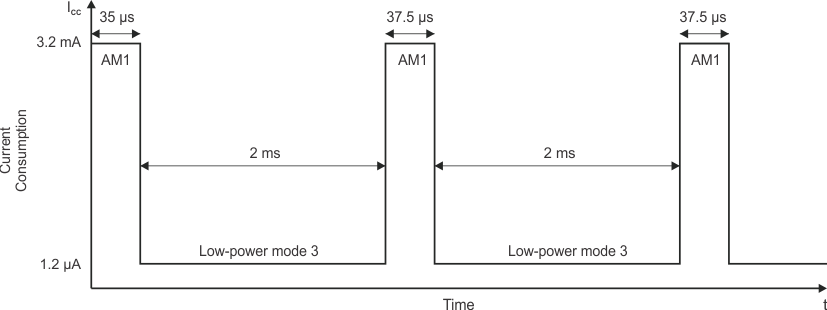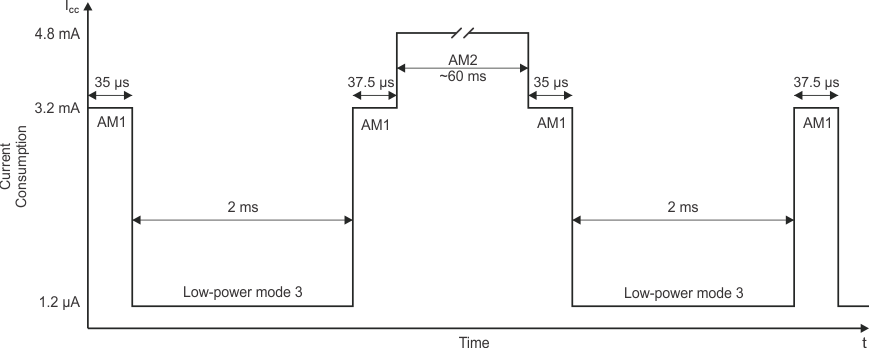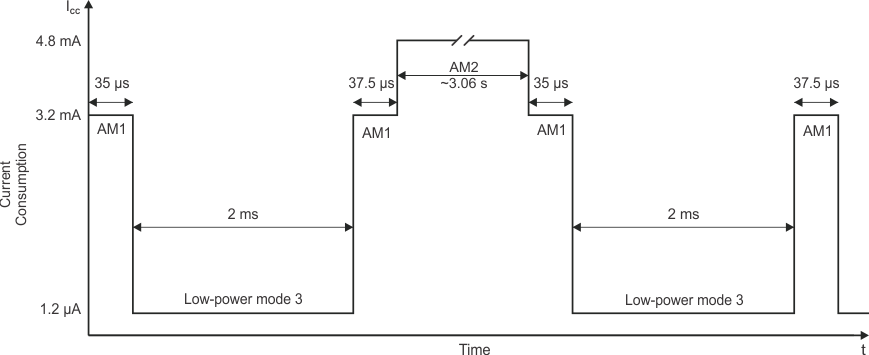SLAA351A April 2007 – November 2018 MSP430F2232 , MSP430F2232 , MSP430F2234 , MSP430F2234 , MSP430F2252 , MSP430F2252 , MSP430F2254 , MSP430F2254 , MSP430F2272 , MSP430F2272 , MSP430F2274 , MSP430F2274
2.9 Current Consumption
The board is sourced by the two 1.5-V AAA batteries, which have a capacity of approximately 800 mAh. This gives a battery life of up to 416 days at 80-µA current consumption and up to 666 days at 50-µA current consumption. These figures are with the peripherals switched off when not in operation. The current consumption can be further reduced if the wake up is increased from the present interval of 2 ms. However, a longer interval increases the chances of missing a sound event. Figure 2 through Figure 4 are graphical representations of the current consumption for this board.
Figure 2 shows the current consumption profile when there is no activity. The device goes into active mode 1 (CPU at 8 MHz), denoted by AM1, for 37.5 µs once every 2 ms.
 Figure 2. Current Consumption Profile During No Activity
Figure 2. Current Consumption Profile During No Activity Figure 3 shows the current consumption profile when there is activity detected on the microphone. The device goes into active mode 1 (CPU at 8 MHz) first for 37.5 µs and then, if the signal is a possible glass breakage, the CPU is configured to work at 12 MHz, denoted as AM2. Samples are accumulated for a period of 60 ms, and signal analysis (as described in Section 3.4) is done on every sample. If the signal is not a glass breakage, the device returns to LPM3 with Timer_A reconfigured.
 Figure 3. Current Consumption Profile During Activity on the Microphone
Figure 3. Current Consumption Profile During Activity on the Microphone Figure 4 shows the current consumption profile when there is a glass breakage. This is a step further in comparison to Figure 3. If a decision is made in favor of a glass-breakage detection, the CPU continues in AM2, during which time the LED and buzzer are on for a period of three seconds. After this time, the device is reinitialized and returns to LPM3.
 Figure 4. Current Consumption Profile During Glass-Breakage Detection
Figure 4. Current Consumption Profile During Glass-Breakage Detection